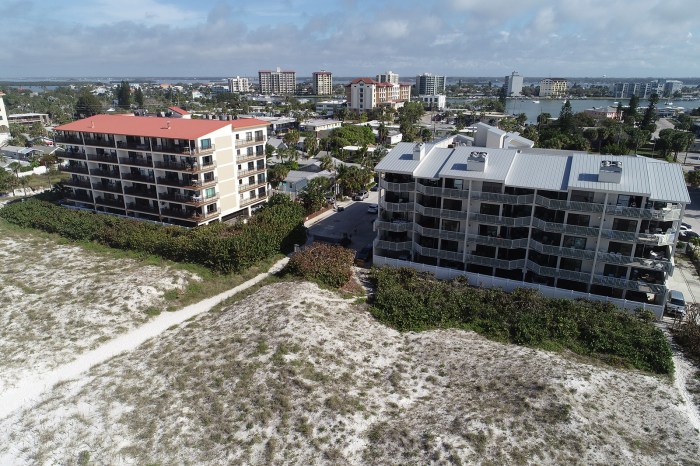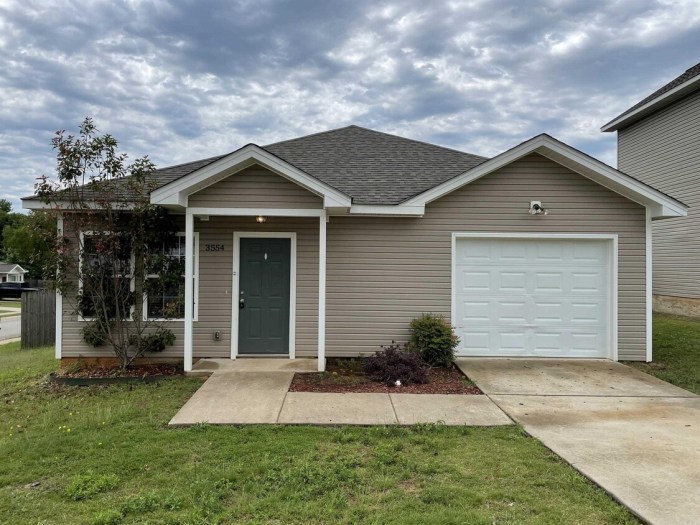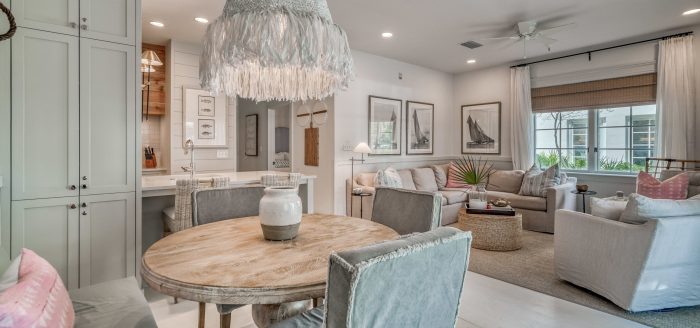Houses and Condos for Rent A Comprehensive Guide
Market Overview: Houses and Condos for Rent in Major Metropolitan Areas
Houses and condos for rent – The rental market for houses and condos in major metropolitan areas is dynamic and influenced by various factors. This section provides an overview of current trends, comparing and contrasting the markets for houses and condos, and analyzing typical renter profiles.
Current Market Trends
Rental prices in major cities are significantly impacted by factors such as economic conditions, population growth, interest rates, and the availability of housing inventory. Strong job markets and population influxes typically drive up demand, leading to higher rental costs. Conversely, economic downturns or increased housing construction can lead to price stabilization or even decreases. For example, in cities like New York and San Francisco, historically high demand has resulted in consistently elevated rental rates, while areas experiencing slower economic growth might see more moderate increases or even decreases in certain segments of the market.
Rental Market Comparison: Houses vs. Condos
The supply, demand, and average rental costs for houses and condos differ significantly. Houses generally have a lower supply than condos, particularly in densely populated urban centers. Demand for houses often varies depending on family size and lifestyle preferences. Condos, offering more compact living spaces, often have a higher supply and cater to a broader range of renters, including single individuals and young professionals.
| Property Type | Supply | Demand | Average Rental Cost |
|---|---|---|---|
| Houses | Generally lower, especially in urban areas | High in desirable neighborhoods, varies by family size | Higher than condos, on average |
| Condos | Generally higher than houses | High in central locations with good amenities | Lower than houses, on average |
Typical Renter Profiles
House renters often consist of families with children, seeking more space and privacy. Condo renters tend to be a more diverse group, including young professionals, single individuals, and couples without children, who prioritize convenience and amenities over extensive living space. Demographic factors like income levels and age also play a role in determining the choice between a house and a condo.
Property Features and Amenities
The features and amenities desired in rental properties vary greatly depending on individual needs and preferences. Location, size, and specific amenities play crucial roles in determining a property’s desirability and rental price.
Sought-After Features
- Location: Proximity to work, schools, public transportation, and entertainment.
- Size: Number of bedrooms and bathrooms, overall square footage.
- Amenities: In-unit laundry, parking, outdoor space, updated appliances.
- Safety and Security: Secure building access, well-lit areas, neighborhood safety.
- Pet-Friendliness: Acceptance of pets, outdoor space for pets.
Amenities Comparison: Houses vs. Condos
| Feature | Houses | Condos |
|---|---|---|
| Parking | Usually driveway or garage | Often assigned parking or shared garage |
| Outdoor Space | Typically larger yards or patios | May include balconies or patios, often smaller than houses |
| In-Unit Laundry | Common, but not always included | Often included |
Emerging Trends in Property Features

Source: beachresortcondos.com
Smart home technology is gaining significant traction, with features like smart thermostats, keyless entry systems, and integrated security systems becoming increasingly popular. Sustainable features, such as energy-efficient appliances and water-saving fixtures, are also attracting environmentally conscious renters. For instance, buildings with solar panels and green roofs are becoming more prevalent, attracting tenants prioritizing eco-friendly living.
Rental Process and Agreements
The process of renting a house or condo typically involves several key steps, from initial property searching to signing the lease agreement. Understanding these steps and the terms of the lease is crucial for both landlords and tenants.
Steps in the Rental Process
- Searching for properties online or through real estate agents.
- Scheduling viewings and touring potential properties.
- Submitting a rental application and providing necessary documentation.
- Background checks and credit checks conducted by the landlord.
- Negotiating lease terms and conditions.
- Signing the lease agreement.
- Paying the security deposit and first month’s rent.
Lease Agreement Comparison, Houses and condos for rent

Source: apartments.com
Lease agreements for houses and condos share similarities, but there are key differences. Condo leases often include clauses regarding adherence to homeowner association (HOA) rules and regulations, while house leases may focus more on property maintenance and repairs.
Example of a crucial clause in a condo lease: “Tenant agrees to abide by all rules and regulations established by the homeowner’s association (HOA).”
Example of a crucial clause in a house lease: “Landlord is responsible for maintaining the structural integrity of the property, including the roof and foundation.”
Landlord and Tenant Responsibilities
Landlords are typically responsible for major repairs and maintenance, while tenants are responsible for maintaining the cleanliness and condition of the property and reporting any necessary repairs promptly. For example, a landlord is responsible for fixing a broken water heater, while a tenant is responsible for fixing a leaky faucet caused by misuse.
Rental Costs and Associated Expenses
Rental costs are influenced by numerous factors, and understanding these factors is crucial for effective budgeting. This section explores these factors and provides strategies for managing rental expenses.
Factors Influencing Rental Costs
| Factor | Impact on Rental Cost |
|---|---|
| Location | Desirable neighborhoods command higher rents. |
| Size | Larger properties typically cost more. |
| Amenities | In-unit laundry, parking, and other amenities increase rental costs. |
| Property Condition | Newly renovated or updated properties command higher rents. |
Additional Expenses: Houses vs. Condos
In addition to rent, renters should budget for utilities (electricity, gas, water), internet, and potentially HOA fees (for condos). House renters may also have additional expenses related to landscaping and exterior maintenance.
Budgeting for Rental Expenses
Creating a realistic budget involves tracking income and expenses, allocating funds for rent and associated costs, and setting aside emergency funds for unexpected repairs or maintenance. Methods like the 50/30/20 rule (50% needs, 30% wants, 20% savings) or zero-based budgeting can help manage expenses effectively.
Finding and Choosing a Rental Property
Finding the right rental property involves exploring various options and conducting thorough research. This section Artikels different methods for finding rental properties and provides a checklist for evaluating potential options.
Methods for Finding Rental Properties
Renters can utilize online platforms (Zillow, Apartments.com), work with real estate agents, or explore listings in local newspapers or community boards. Each method has its advantages and disadvantages.
Researching Potential Rental Properties
Before signing a lease, it’s essential to thoroughly research potential properties. This includes verifying the landlord’s legitimacy, inspecting the property for any damage or issues, reviewing the lease agreement carefully, and understanding all associated costs.
- Verify landlord’s legitimacy.
- Inspect property thoroughly.
- Review lease agreement carefully.
- Understand all associated costs.
- Check neighborhood safety and amenities.
Houses vs. Condos: Advantages and Disadvantages
- Houses: More privacy, larger space, potential for customization, but higher maintenance and costs.
- Condos: Less maintenance, amenities, often more central locations, but less privacy and potential for HOA restrictions.
Illustrative Examples

Source: rosemarybeach.com
Desirable Rental House
Imagine a charming three-bedroom, two-bathroom house in a quiet, tree-lined neighborhood. The house features a spacious backyard perfect for outdoor gatherings, a modern kitchen with stainless steel appliances, and a finished basement that could serve as a home office or playroom. The estimated rental cost is $3,500 per month. The location offers easy access to parks, schools, and shopping centers, making it an ideal family home.
Desirable Rental Condo
Picture a stylish one-bedroom condo in a high-rise building in the heart of the city. The condo boasts floor-to-ceiling windows offering stunning city views, a modern bathroom with a walk-in shower, and an open-concept living area perfect for entertaining. The building offers a fitness center, a rooftop terrace, and a 24-hour concierge service. The estimated rental cost is $2,800 per month.
Its central location provides easy access to public transportation, restaurants, and cultural attractions, making it ideal for young professionals.
General Inquiries
What is the average lease term for houses and condos?
Lease terms typically range from six months to one year, but longer-term leases are sometimes available.
What is a security deposit, and how much should I expect to pay?
A security deposit protects the landlord against damages to the property. It’s usually one or two months’ rent.
What are my rights as a tenant?
Tenant rights vary by location, but generally include the right to a habitable dwelling, privacy, and protection from discrimination.
Can I break my lease early?
Breaking a lease early usually incurs penalties, unless specified otherwise in the agreement or due to extenuating circumstances.
How do I find a reputable real estate agent?
Seek recommendations, check online reviews, and verify their licensing and affiliations with professional organizations.




















